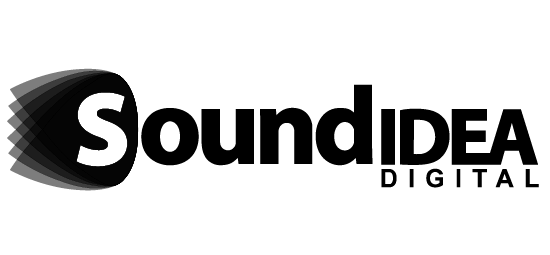
7 Ways a Video Production Firm Makes the First Three Seconds Count
Research into online attention shows just how quickly viewers make decisions. On platforms such as Facebook and Instagram, a “view” is counted only after a video has played for three seconds. In practical terms, that means an audience is already deciding within those first frames whether to continue or to move on. For organisations commissioning video, this is no small matter. Even internal communications or professional training content compete against the same attention habits people form in their daily scrolling. For a corporate message to gain traction, the opening sequence must feel immediately purposeful. Those initial moments act almost like a handshake: they establish tone, create interest, and set expectations for what follows. Let’s take a look at how a video production firm designs opening shots that are not only visually striking but also strategically aligned with business goals. Each approach illustrates how professionals think about those critical seconds, showing how small creative decisions can make a large difference to audience retention.
1. The Leaning-In Close-Up
Why it works in corporate contexts
An immediate close-up, especially one that begins mid-sentence, generates intrigue. For leadership communications, this approach signals authenticity and authority, as though the viewer has entered an unscripted moment of significance. It cuts through formality and creates the sense that something important is already underway.
Professional insight
Experienced directors often frame this kind of shot with a shallow depth of field to keep attention firmly on the speaker. A slightly offset angle can make the audience feel as if they are sitting at the same table rather than watching from afar. Starting mid-speech, rather than from silence, gives the impression of urgency and draws viewers into the flow.
Example
A company executive appears mid-thought: “…our results show an unexpected shift…” before the scene widens to reveal context.
2. The Problem/Solution Split Screen
Why it works in corporate contexts
Humans instinctively seek contrast. Showing two scenarios side by side, such as a challenge and its resolution, delivers a story without a single word. For a professional audience, this can highlight efficiency gains, safety improvements, or workflow changes.
Professional insight
An experienced video production firm pays close attention to ensure each half of the frame is balanced in tone, lighting, and perspective. This balance prevents distraction and keeps the audience focused on the change being presented. A subtle transition effect or aligned movement across both sides of the screen makes the contrast more dynamic.
Example
One side of the frame shows a cluttered storage area; the other presents the same space newly organised, branded, and functional.
3. The Data Flash
Why it works in corporate contexts
Statistics command immediate attention. A bold figure or percentage displayed at the outset signals evidence-based thinking, which appeals strongly to decision-makers. Starting with data also encourages viewers to anticipate an explanation.
Professional insight
A professional video production firm designs these shots with bold typography, considered colour contrasts, and smooth transitions. The aim is not only to deliver the number but to give it visual weight that suggests importance. Context then follows through narration or supporting visuals.
Example
“73 per cent of employees expect a training video to show benefits within the first ten seconds” appears in large, striking type before the narration begins.
4. The Audio Hook with Visual Tease
Why it works in corporate contexts
Hearing a voice before seeing the speaker builds intrigue. The brain seeks to connect sound with its source, so starting with audio pulls the viewer forward into the video.
Professional insight
Production teams design this carefully: the spoken line must be brief and meaningful, while the visuals need to provide enough context without revealing too much. This interplay between sound and image builds anticipation.
Example
An unseen voice says, “We lost nearly half our audience when we skipped this step…” as the screen shows a frozen projector slide. The camera then cuts to the meeting room itself.
5. The Unexpected Action Cut
Why it works in corporate contexts
Unusual or sudden motion disrupts viewing habits. A sharp change in action prevents the audience from settling into passive watching. For corporate messages, this can energise otherwise formal content.
Professional insight
A seasoned video production firm employs match cuts where two scenes are linked by a single action or shape. Timing is everything: the edit must feel fluid, yet the sudden change keeps attention active.
Example
An employee shuts a laptop, and the action cuts instantly to a drone shot where a building door closes in sync with the motion.
6. The Curiosity Question Overlay
Why it works in corporate contexts
Questions provoke thought. When placed on screen as text, the audience instinctively pauses to answer internally. In corporate communications, this can highlight an issue or challenge that the following video will address.
Professional insight
A video production firm with an experienced design team keeps the text minimal and clear, with motion or timing that adds weight. The question is placed against an intentional background, perhaps blurred office activity or a ticking clock, to anchor the thought visually.
Example
Words appear across the screen: “What caused retention to fail before the session even began?” while the background shows indistinct office movement.
7. The Transformation Tease
Why it works in corporate contexts
Showing a glimpse of success at the very start sparks curiosity about how it was achieved. Corporate audiences respond well to outcomes, but withholding the process encourages continued viewing.
Professional insight
Professionals reveal a scene of achievement for only a second before switching abruptly to an earlier stage. The contrast sets up a mini-narrative that promises explanation.
Example
A short clip of an applauding audience at a product launch fades quickly to a team preparing nervously in rehearsal.
Why Those First Frames Matter
Across all seven approaches, the common thread is intentionality. The first three seconds of a video carry disproportionate weight, not because audiences are impatient by nature, but because attention online has been trained to filter quickly. For organisations investing in professional content, those initial frames determine whether the message is absorbed or ignored.
A video production firm views these moments as strategic rather than decorative. Each choice, whether a close-up, a statistic, or a question, signals something about the organisation itself. They suggest precision, preparation, and respect for the viewer’s time. More than just entertainment, these openings convey authority and focus.
The next time a corporate video begins, those first three seconds will either invite the audience in or lose them entirely. Think of them as the opening line of a conversation. In such a short span, the greeting can already suggest confidence, purpose, and relevance. For that reason, the three-second test is not only about retention but about first impressions that reflect the organisation as a whole.
Curiosity is a powerful way to draw viewers in. To see how these professional techniques can be applied to your own communications, get in touch with Sound Idea Digital and discover what is possible for your next video project.
We are a full-service Web Development and Content Production Agency in Gauteng specialising in Video Production, Animation, eLearning Content Development, Learning Management Systems, and Content Production.
Contact us for a quote. | enquiries@soundidea.co.za | https://www.soundideavideoproduction.co.za| +27 82 491 5824 |
Seeing What Works in Action
If you would like to understand more about how effective openings and video structure come together, these articles provide detailed perspectives from different angles. From mastering the three-second hook to discovering fresh marketing video ideas, and learning how professionals plan corporate videos, each piece offers practical examples and thoughtful approaches to help refine your video strategy.
Video Productions Company: The 3-Second Hook
Video Production Johannesburg: Marketing Video Ideas
Video Production Johannesburg: How to Make a Corporate Video

